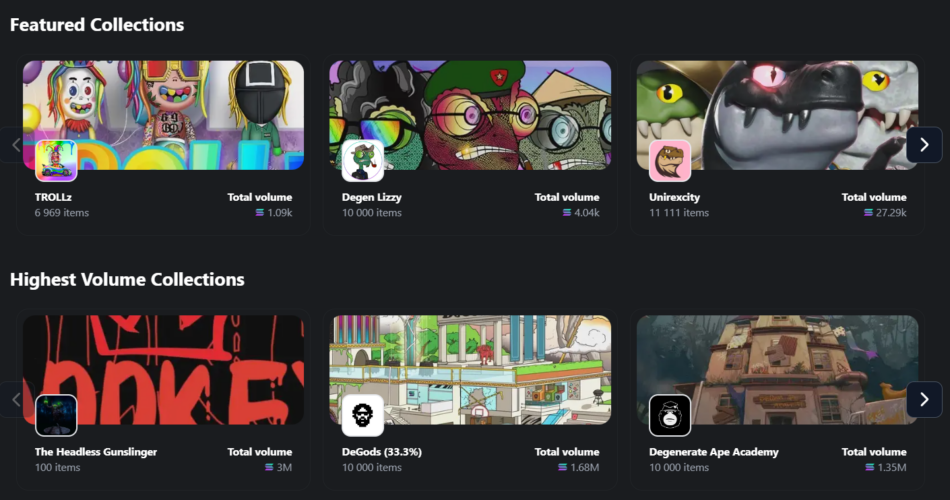Non-Fungible Tokens (NFTs) have emerged as a revolutionary asset class. The NFT marketplace, a platform where these unique digital assets are traded, has become a cornerstone of this new economy. This comprehensive guide aims to explore the intricacies of the NFT marketplace, providing you with the knowledge to navigate this exciting terrain.
Table of Contents
What is an NFT Marketplace?
Understanding Non-Fungible Tokens
An NFT Marketplace is a specialized platform that facilitates the exchange of Non-Fungible Tokens (NFTs), a type of digital asset that represents ownership of unique items or content. Unlike traditional online marketplaces that deal with physical or digital goods that can be interchanged, NFT marketplaces deal with assets that are unique and cannot be replaced on a like-for-like basis.
In the context of the blockchain, where NFTs are typically created and managed, an NFT is a token that we can use to represent ownership of unique items. They let us tokenize things like art, collectibles, even real estate. They’re called non-fungible because each token has a unique value and specific information that cannot be replaced. This contrasts with cryptocurrencies like bitcoin, where each coin is identical to every other coin; these are called fungible tokens.
The Role of NFT Marketplaces
NFT marketplaces are the digital arenas where these unique tokens are bought, sold, and traded. They provide the infrastructure necessary for these transactions to take place, including listing services, search features, payment processing, and sometimes even additional features like social networking and tools for artists.
These marketplaces are the backbone of the NFT economy, providing a secure environment for transactions and fostering a community of digital artists and collectors. They are the platforms where creators can mint new NFTs and list them for sale, and where buyers can browse, bid on, and purchase these unique digital assets.
How to Choose the Right NFT Marketplace

Navigating the world of Non-Fungible Tokens (NFTs) can be both exciting and overwhelming, especially when it comes to choosing the right marketplace. With a myriad of platforms available, each offering unique features and catering to different types of NFTs, making the right choice is crucial to your NFT journey. Here are some key factors to consider:
Understanding Your Needs and Interests
The first step in choosing the right NFT marketplace is understanding your own needs and interests. Are you an artist looking to sell your digital artwork? A collector seeking rare items? Or perhaps a trader interested in the financial aspects of NFTs? Different marketplaces cater to different needs, so identifying what you’re looking for will help narrow down your options.
Assessing the Types of NFTs on the Platform
Different NFT marketplaces specialize in different types of NFTs. Some are geared towards digital art, others focus on collectibles, virtual real estate, or even domain names. Choose a marketplace that aligns with the type of NFTs you’re interested in.
Evaluating the User Experience
The user experience of a marketplace includes its interface design, ease of use, customer support, and overall functionality. A platform that is easy to navigate and understand can make your NFT trading experience much smoother and more enjoyable.
Checking the Marketplace’s Reputation and Community
A marketplace’s reputation and the community surrounding it are important indicators of its reliability and trustworthiness. Look for platforms with positive reviews, active user communities, and transparent policies. These factors can provide a sense of security and support as you buy or sell NFTs.
Understanding the Fee Structure
Most NFT marketplaces charge fees for transactions conducted on their platforms. These can include listing fees, transaction fees, and sometimes even royalties on future sales. It’s important to understand these fees upfront to avoid any surprises and to ensure the marketplace fits your budget.
Security Measures
Security is a critical consideration when dealing with digital assets. Ensure the marketplace you choose has robust security measures in place to protect your assets and personal information. This can include things like two-factor authentication, secure wallets, and a transparent and reliable transaction process.
Top 14 NFT Marketplace List. Largest NFT Marketplaces
| Marketplace | Blockchain | Notable Features | Fees | User Experience |
|---|---|---|---|---|
| OpenSea | Ethereum | Largest NFT marketplace, supports ERC721 and ERC1155 assets | 2.5% transaction fee | User-friendly, extensive filtering options |
| Blur | Ethereum | High trading speeds, the option to sweep NFTs across multiple marketplaces | No fee (only gas) | User-friendly, especially for professional and high-frequency traders |
| Rarible | Ethereum | Decentralized marketplace, allows users to create and sell NFTs | 2.5% transaction fee | Intuitive, easy to create and list NFTs |
| Foundation | Ethereum | Curated platform, focuses on digital art | 15% commission on first sale, 10% on secondary sales | Sleek, minimalist design |
| SuperRare | Ethereum | Single-edition digital artworks | 15% commission on first sale, 3% on secondary sales | Clean, easy to navigate |
| CryptoPunks | Ethereum | 10,000 uniquely generated characters, one of the first NFTs on Ethereum | No fee (only gas) | Simple, straightforward |
| VeVe | GoChain | Premium licensed digital collectibles (e.g., Marvel, DC) | Varies per collectible | Interactive, AR features |
| Solanart | Solana | NFT marketplace on Solana, low transaction fees | 3% transaction fee | Clean, easy to use |
| SolSea | Solana | NFT marketplace on Solana, allows minting | 2% transaction fee | User-friendly, easy to navigate |
| Magic Eden | Solana | NFT marketplace on Solana, features various collections | 2% transaction fee | Sleek, easy to navigate |
| Binance NFT | Binance Smart Chain | Offers various types of NFTs, backed by Binance | 1% transaction fee | User-friendly, extensive filtering options |
| BakerySwap | Binance Smart Chain | Decentralized exchange with NFT marketplace | 2.5% transaction fee | Intuitive, easy to create and list NFTs |
| Hic et Nunc | Tezos | Environmentally friendly, low transaction fees | No fee (only gas) | Minimalist, easy to use |
| Alephium Testnet NFT | Alephium | Testnet NFT marketplace, for testing purposes | No fee (testnet) | Simple, straightforward |
OpenSea – Most Popular NFT Marketplace
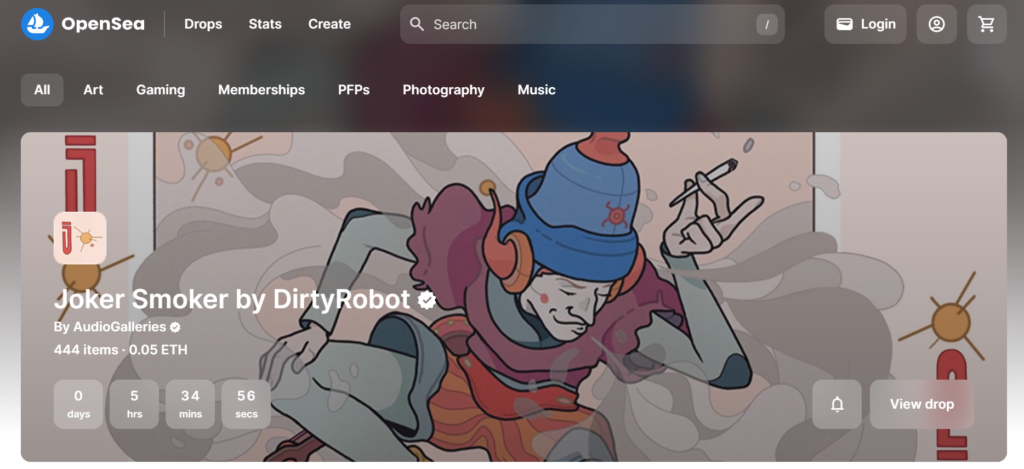
OpenSea is known as one of the largest and earliest NFT marketplaces, supporting a wide range of digital assets. It operates on the Ethereum blockchain and is known for its extensive collection of NFTs, including art, collectibles, and more.
Pros and Cons
| Pros | Cons |
|---|---|
| Large user base and variety of NFTs | Market share dropped from over 73% to 18% since October 2022 |
| Supports a wide range of digital assets (ERC721 and ERC1155) | Trading volume has significantly decreased, more than 10 times over the last two years |
| User-friendly interface with easy navigation | Recently laid off 50% of its staff, indicating potential issues |
| Loss of exclusivity with major creators like Yuga Labs planning to leave by February 2024 |
Blur – Biggest NFT Marketplace
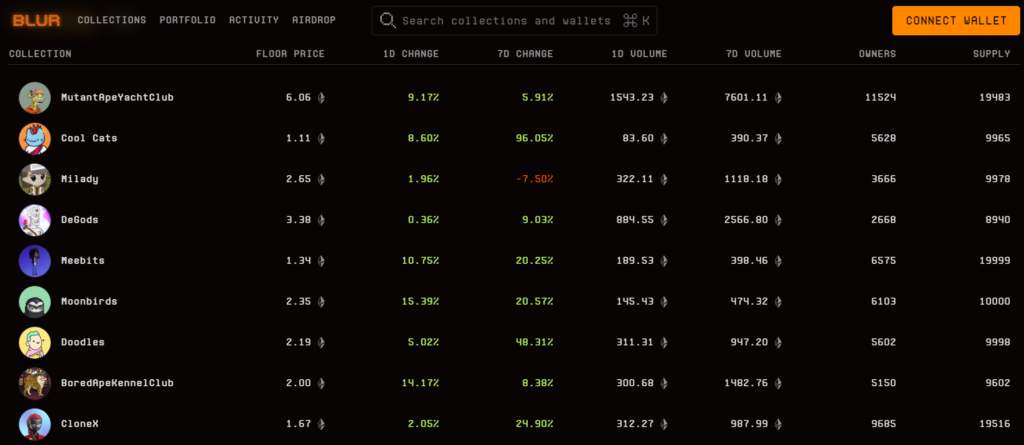
Blur is a newer NFT marketplace that has quickly gained traction by offering a platform that caters to professional traders with features like bulk buying and advanced analytics.
Pros and Cons
| Pros | Cons |
|---|---|
| Zero marketplace fees to attract users | Newer platform, may have less historical data and established trust compared to older platforms |
| Advanced analytics for portfolio management | |
| Token rewards for active NFT traders (BLUR token airdrops) | |
| More user-friendly platform with optional royalties |
Rarible
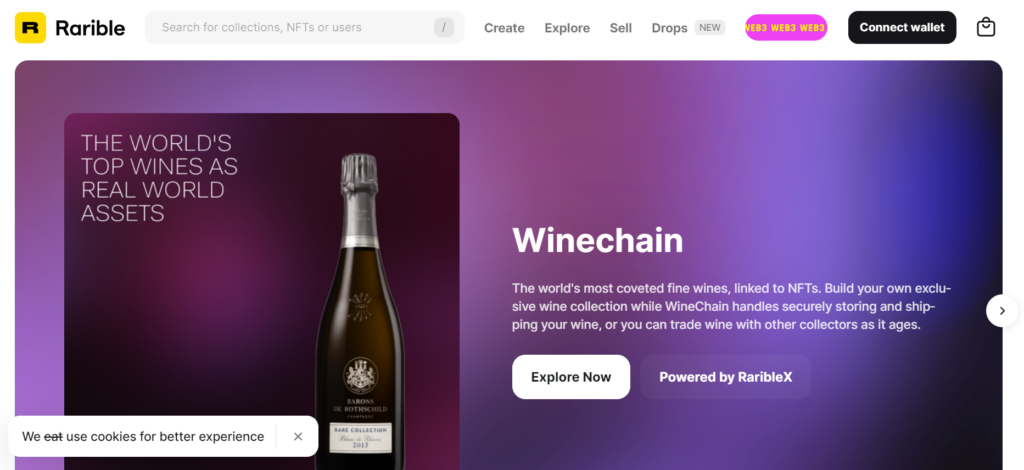
Rarible is a decentralized NFT marketplace that allows users to create, buy, and sell NFTs. It operates on the Ethereum blockchain and focuses on a community-driven approach.
Pros and Cons
| Pros | Cons |
|---|---|
| Decentralized platform offering power to the users | Charges a 2.5% transaction fee, which might be off-putting for some |
| Allows users to mint their own NFTs directly | Lesser-known compared to marketplaces like OpenSea |
| Rarible token holders can participate in governance |
Foundation
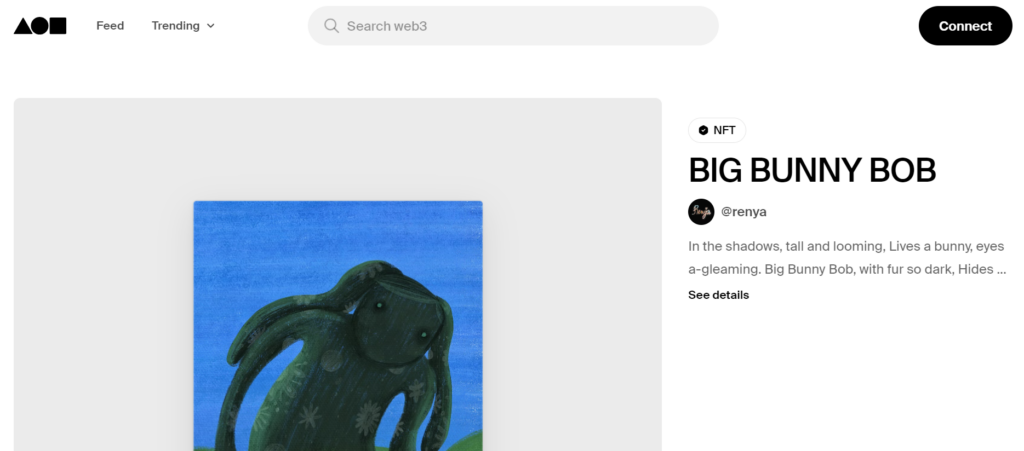
Foundation is a curated NFT marketplace focusing on digital art. It operates on the Ethereum blockchain and is known for its sleek design and artist-centric approach.
Pros and Cons
| Pros | Cons |
|---|---|
| Curated selection ensures quality of digital art | Charges a 15% commission on the first sale, which is high |
| Strong support for artists and creativity | Being curated, it may have fewer options for buyers and sellers |
SuperRare
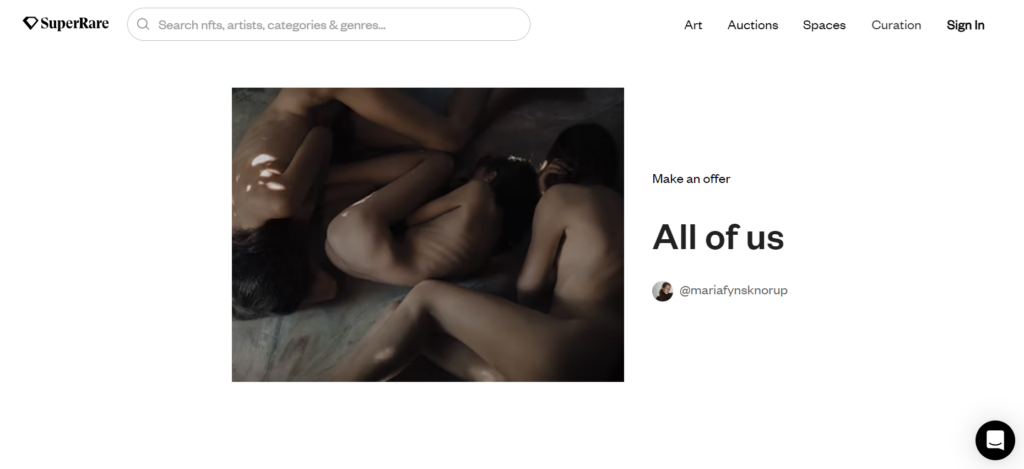
SuperRare is an NFT marketplace that specializes in single-edition digital artworks. It operates on the Ethereum blockchain and is known for its high-quality, exclusive art pieces.
Pros and Cons
| Pros | Cons |
|---|---|
| Focuses on single-edition artworks, attracting quality content | High commission fee of 15% on the first sale |
| Clean and easy-to-navigate interface |
CryptoPunks
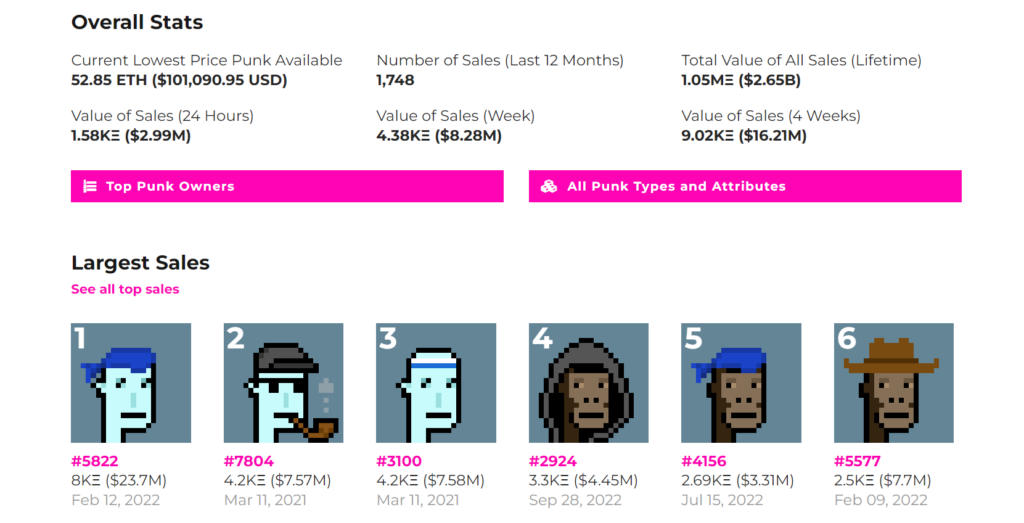
CryptoPunks is one of the first NFT projects on the Ethereum blockchain, consisting of 10,000 uniquely generated characters. It has its own marketplace operated by Larva Labs.
Pros and Cons
| Pros | Cons |
|---|---|
| Pioneer status with historical significance in the NFT space | Limited to 10,000 items, not catering to a wide audience |
| No marketplace fees, only gas fees for transactions |
VeVe
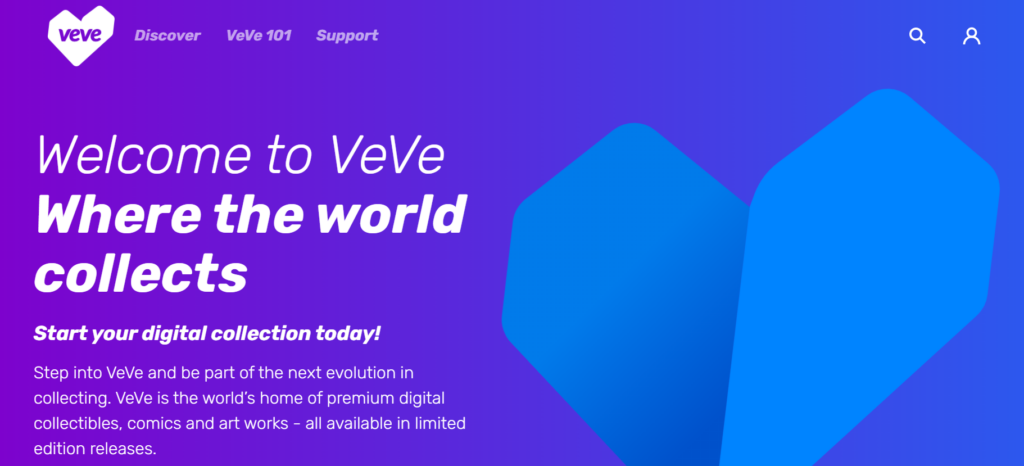
VeVe is an NFT marketplace that operates on the GoChain blockchain. It specializes in premium licensed digital collectibles from brands like Marvel and DC.
Pros and Cons
| Pros | Cons |
|---|---|
| Offers premium licensed digital collectibles | Operating on GoChain might limit interoperability with other blockchains |
| Provides AR features for a unique user experience |
Solana NFT Marketplaces
Solana NFT marketplaces are a new breed of digital asset platforms that leverage the high-speed and low-cost transactions of the Solana blockchain. These marketplaces are gaining popularity due to their efficiency and the growing ecosystem of Solana-based NFTs. They offer a diverse range of digital collectibles, from art and music to gaming items and virtual real estate. With features like embedded licenses, advanced analytics, and community governance, Solana NFT marketplaces are attracting a new wave of creators and collectors looking for alternatives to the Ethereum-dominated NFT space. The most notable among these marketplaces include Magic Eden, SolSea, and Solanart, each providing unique tools and opportunities for users to engage with the NFT world.
Solanart
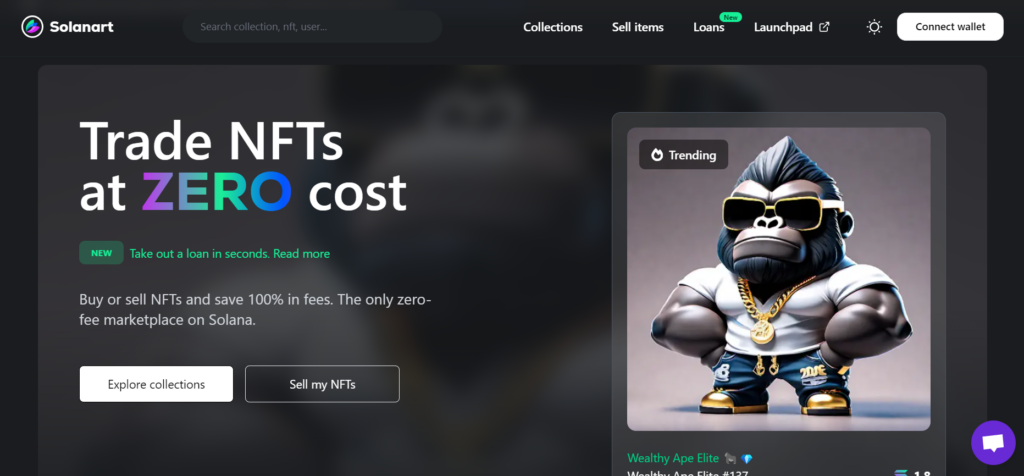
Solanart is an NFT marketplace on the Solana blockchain, known for its low transaction fees and clean interface.
Pros and Cons
| Pros | Cons |
|---|---|
| Low transaction fee structure | Limited to Solana blockchain, may not attract users from other communities |
| Fast transactions due to Solana’s high-speed blockchain |
SolSea
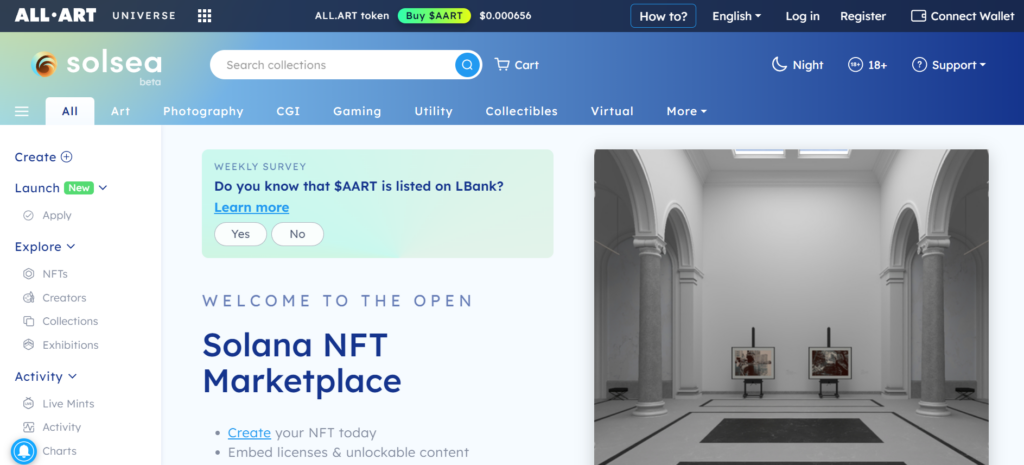
SolSea is an NFT marketplace that operates on the Solana blockchain. It distinguishes itself by allowing creators to embed licenses when minting NFTs, offering a new level of customization and utility.
Pros and Cons
| Pros | Cons |
|---|---|
| Allows creators to embed licenses directly into NFTs, offering unique utility and customization | As a newer platform, it may have a smaller user base compared to more established marketplaces |
| Operates on the Solana blockchain, benefiting from low transaction fees and fast processing times | Focused on the Solana ecosystem, which may not appeal to users of other blockchains |
| Offers an All-Art protocol, enhancing creator royalties and NFT minting |
Magic Eden
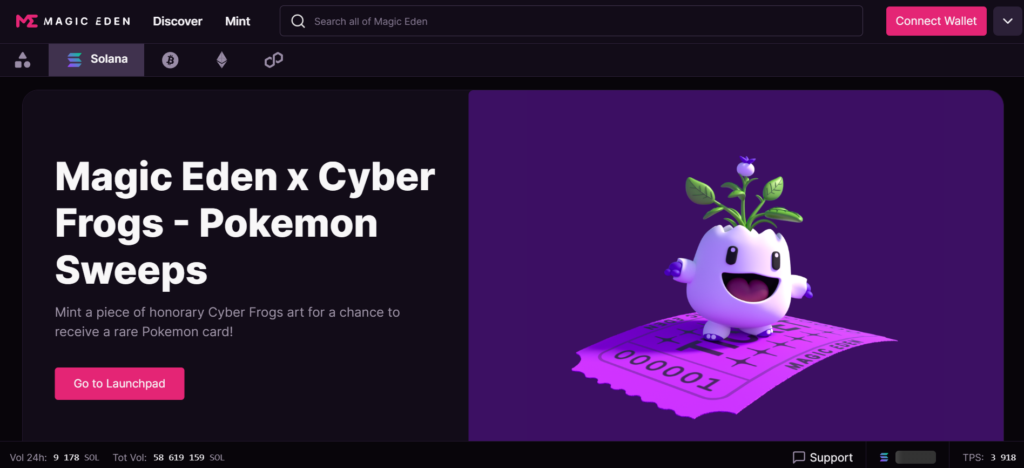
Magic Eden is a leading NFT marketplace on the Solana blockchain, known for its low fees and fast transaction times.
Pros and Cons
| Pros | Cons |
|---|---|
| Low transaction fees, making it cost-effective for users | Primarily focused on the Solana blockchain, which may limit users from other ecosystems |
| Fast transactions due to Solana’s high throughput | |
| User-friendly interface and easy listing process |
Binance Smart Chain NFT Marketplaces
Binance Smart Chain (BSC) NFT marketplaces are part of a growing ecosystem that capitalizes on the BSC’s unique strengths, such as its low transaction fees and high throughput. These marketplaces cater to a wide audience looking for accessible and diverse NFT trading experiences. BSC’s compatibility with the Ethereum Virtual Machine (EVM) also allows for a seamless transition for users and developers from Ethereum, making it a competitive alternative for NFT trading.
The BSC NFT marketplaces are known for their user-friendly interfaces, innovative features, and a strong community focus. They host a variety of digital assets, including art, gaming items, and utility-based NFTs. With the backing of Binance, one of the largest cryptocurrency exchanges in the world, these marketplaces benefit from high liquidity and a large user base.
Binance NFT Marketplace
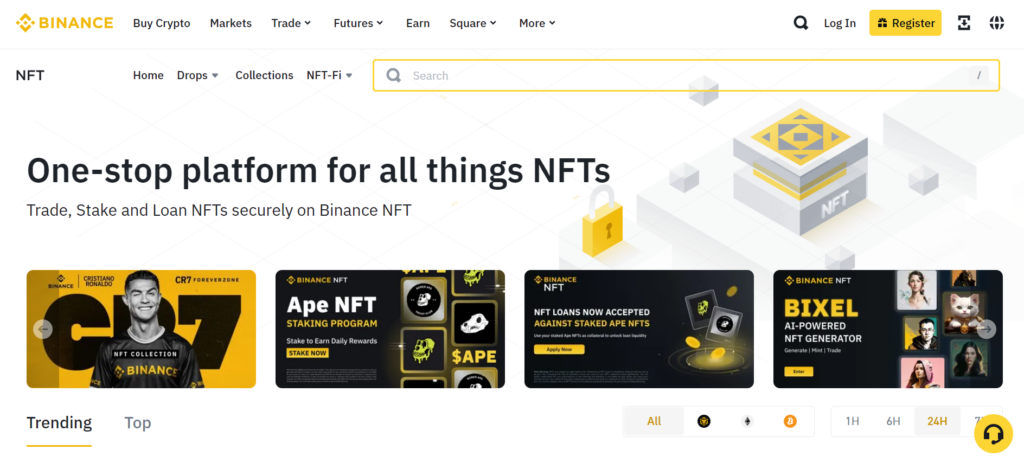
The official NFT platform of Binance offers a wide range of digital assets on both the Binance Smart Chain and Ethereum networks. It provides a seamless experience for users with the integration of Binance’s existing infrastructure and services.
Pros and Cons
| Pros | Cons |
|---|---|
| Integrated with Binance’s ecosystem, offering high liquidity and a large user base | May have higher competition due to the large number of users and listings |
| Supports both BSC and Ethereum, providing flexibility for users | The focus on premium and high-value NFTs might limit options for smaller creators and collectors |
| Features like mystery boxes and premium events create unique buying opportunities | As it’s part of a centralized exchange, it may not appeal to users seeking fully decentralized platforms |
| User-friendly interface with easy access for Binance exchange users |
BakerySwap
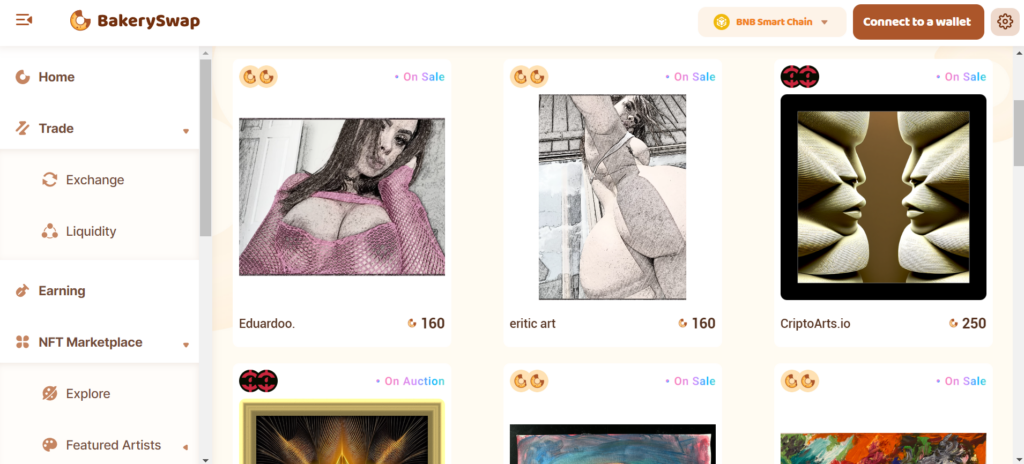
BakerySwap is an automated market maker (AMM) and decentralized exchange (DEX) on the Binance Smart Chain (BSC) that includes an NFT marketplace. It allows users to trade digital assets and NFTs, engage in yield farming, and participate in a decentralized baking-themed ecosystem. The platform is known for its user-friendly interface and integration of DeFi and NFTs, providing a one-stop-shop for various crypto activities.
Pros and Cons
| Pros | Cons |
|---|---|
| Integrated DeFi and NFT marketplace, offering a diverse range of services | As a DEX, it might be more complex for beginners compared to centralized alternatives |
| Lower transaction fees and faster speeds due to BSC infrastructure | Might have lower visibility and user base compared to larger NFT marketplaces |
| Offers unique NFTs and the ability to earn rewards through yield farming | The focus on DeFi might distract from the NFT marketplace aspect for users interested only in NFTs |
| User-friendly interface with a creative baking theme | NFTs on BSC might not have the same perceived value as those on Ethereum due to the latter’s first-mover advantage |
How to Buy and Sell on an NFT Marketplace
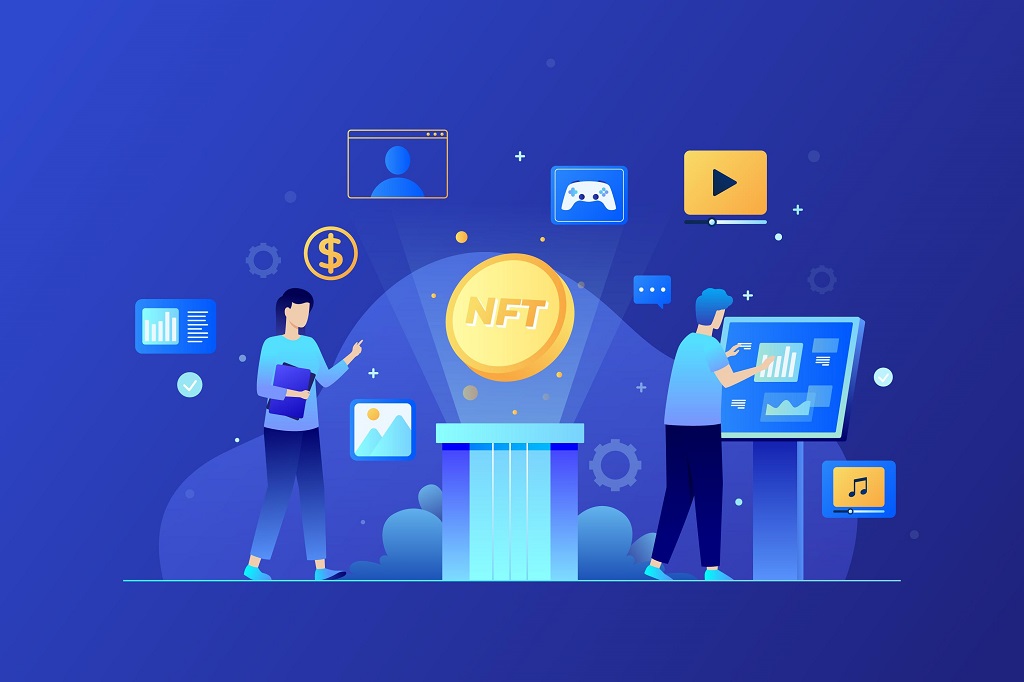
The process of buying and selling on an NFT marketplace can seem complex at first, but with a little guidance, it becomes a straightforward process. Here’s a step-by-step guide to help you navigate this journey.
Setting Up Your Wallet
Before you can buy or sell NFTs, you’ll need a digital wallet. This wallet will store your NFTs and the cryptocurrency you’ll use to buy them. Wallets like MetaMask, and Coinbase Wallet are widely used and integrate with most NFT marketplaces.
Choosing the Right Marketplace
As we’ve discussed earlier, different marketplaces cater to different types of NFTs and have different features. Choose a marketplace that aligns with your needs and interests.
Creating an Account
Once you’ve chosen a marketplace, you’ll need to create an account. This usually involves providing an email address and setting up a password. You’ll also need to connect your digital wallet to your marketplace account.
Buying an NFT
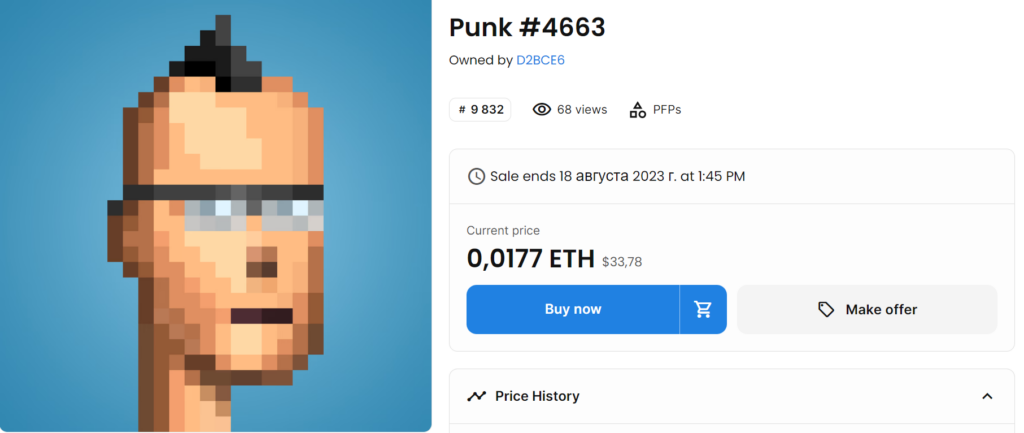
To buy an NFT, browse the marketplace for an NFT you’re interested in. Once you’ve found one, click on it for more details. If you’re happy with the price, click the ‘Buy’ button. You’ll then need to confirm the transaction in your digital wallet. Remember, you’ll also need to pay for gas fees (transaction fees on the blockchain), so make sure you have enough cryptocurrency in your wallet.
Selling an NFT
If you have an NFT you’d like to sell, you can list it on the marketplace. Click the ‘Sell’ button and set your price. You can choose to set a fixed price or auction your NFT. Once you’ve listed your NFT, other users can view and purchase it.
Finalizing a Sale
When a buyer decides to purchase your NFT, they will pay the listed price and any associated gas fees. The funds will be transferred to your digital wallet, and the NFT will be transferred to the buyer’s wallet.
Remember, the world of NFTs is exciting but also volatile. Prices can fluctuate rapidly, and the value of NFTs can be subjective. Always do your research and only invest what you can afford to lose. Happy trading!
Case Studies of Successful NFT Trades
- Beeple’s “Everydays: The First 5000 Days”: This digital artwork by artist Beeple (real name Mike Winkelmann) was sold as an NFT at Christie’s auction house for a staggering $69.3 million in March 2021. The sale was facilitated through the Ethereum blockchain, with the NFT marketplace MakersPlace partnering with Christie’s for the auction. This sale not only set a record for the most expensive NFT ever sold but also positioned Beeple among the top three most valuable living artists.
- CryptoPunk #7804: CryptoPunks are one of the earliest examples of NFTs, created by software developers Matt Hall and John Watkinson. These 10,000 unique, pixelated faces have become highly sought after. In March 2021, CryptoPunk #7804 was sold for 4200 ETH, equivalent to approximately $7.6 million at the time of sale. The sale took place on the Ethereum-based marketplace Larva Labs, which is the original marketplace for CryptoPunks.
- CryptoPunk #3100: Another CryptoPunk, #3100, was also sold in March 2021 for 4200 ETH, equivalent to about $7.6 million. This particular punk is one of the only 10 aliens and was sold on the same marketplace, Larva Labs.
Future of NFT Marketplaces
The future of NFT marketplaces is a topic of much speculation and excitement. As we continue to explore the potential of blockchain technology and digital ownership, the role and functionality of NFT marketplaces are expected to evolve significantly.
Integration with Virtual and Augmented Reality
One of the most anticipated developments is the integration of NFT marketplaces with virtual and augmented reality. As the metaverse expands, we can expect NFTs to play a significant role in virtual economies. Users could potentially browse NFT marketplaces in a fully immersive virtual environment, making the experience more interactive and engaging.
Cross-Chain Transactions
Currently, most NFTs are based on the Ethereum blockchain, but other blockchains like Binance Smart Chain, Solana, Flow, and Tezos are also hosting NFTs. In the future, we can expect more cross-chain compatibility, allowing users to trade NFTs across different blockchains seamlessly.
More Diverse NFT Offerings
As the concept of NFTs becomes more mainstream, we can expect to see a wider variety of NFTs available. This could include everything from tokenized real-world assets to intellectual property rights, and even personal data.
Improved User Experience
As competition among NFT marketplaces heats up, platforms will need to offer superior user experiences to attract and retain users. This could include more intuitive interfaces, better search and discovery features, and more robust customer support.
Alephium Testnet NFT Marketplace
Innovative platforms like Alephium are already pushing the boundaries of what’s possible with NFT marketplaces. Alephium’s Testnet NFT Marketplace, available at https://testnet.nft.alephium.org/, is an example of the kind of innovation we can expect to see in the future. Alephium utilizes a unique block-flow sharding architecture, which could potentially offer greater scalability and efficiency for NFT transactions.
Conclusion
In conclusion, the landscape of NFT marketplaces is as diverse as it is dynamic. With a plethora of platforms to choose from, each offering unique features and catering to different niches, the NFT ecosystem is rich with opportunities for creators, collectors, and traders alike. From the pioneering giants like OpenSea to the innovative newcomers like Blur, the market is constantly evolving, propelled by the community’s demand for more user-friendly interfaces, lower fees, and a wider range of digital assets.
The rise of blockchains like Solana and Binance Smart Chain has introduced new players to the field, challenging the Ethereum-dominated space with their low-cost and high-speed transactions. These developments not only democratize the NFT trading experience but also hint at a future where cross-chain interoperability could become the norm, further enriching the NFT marketplace landscape.
As we stand at the cusp of this digital renaissance, it’s clear that NFT marketplaces are not just a passing trend but a fundamental component of the burgeoning digital economy. They are the crucibles within which the art, culture, and commerce of tomorrow are being forged. Whether you’re an artist, a collector, or an investor, there’s never been a more exciting time to explore the world of NFTs.
So why not dive in and explore these platforms for yourself?
FAQs
How many NFT marketplaces are there?
There isn’t a definitive number as new NFT marketplaces are constantly being created, but there are dozens of well-known platforms, and potentially hundreds when including smaller, emerging, or specialized marketplaces. In our article we observed best 14 NFT marketplaces.
How do NFT marketplaces work?
NFT marketplaces function as platforms where users can buy, sell, or trade NFTs (non-fungible tokens). Users typically need to have a digital wallet, purchase cryptocurrency, and then use that cryptocurrency to buy or bid on NFTs. The marketplaces provide a listing service, search functionality, and often a bidding system similar to traditional auction houses.
How do NFT marketplaces make money?
NFT marketplaces typically make money by charging a fee on transactions. This can include listing fees, selling fees, and sometimes also on ‘gas’ fees associated with the blockchain. Some also offer premium services or features for additional costs.
What are the best NFT marketplaces?
The “best” NFT marketplaces can vary based on user needs, but some of the most popular and widely used include OpenSea, Blur, Rarible, Foundation, SuperRare. For those interested in the Solana ecosystem, Magic Eden is a top choice, and Binance NFT Marketplace is notable for users in the Binance Smart Chain network.
